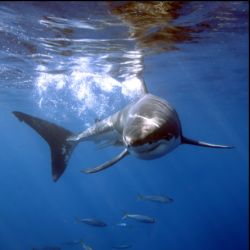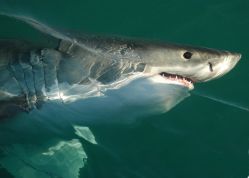 I want to sink my fingers into a lion’s mane. I dream of sitting next to one and just being able to touch his paw, look him in the eyes, nestle next to him and watch as the rest of the savannah goes on with day-to-day life. I watch Kevin Richardson with his lions and lionesses; I wish I could do the same, but I can’t.
I want to sink my fingers into a lion’s mane. I dream of sitting next to one and just being able to touch his paw, look him in the eyes, nestle next to him and watch as the rest of the savannah goes on with day-to-day life. I watch Kevin Richardson with his lions and lionesses; I wish I could do the same, but I can’t.
Well I could, but it would take time, just as Kevin has taken the time to grow and learn about his creatures. It would take observation, understanding and mature judgment to realize when the situation is not ideal for interaction. I could not tie my safety to Kevin, I would have to know the animals personally and trust only myself. The decision to walk and approach the lion, as tame as it could be, would have to be only and completely mine.
It is interesting that the idea of taking the time to observe and understand wild animals is very understandable when it comes to lions, but not in the world of sharks. I am talking specifically about Great White Sharks and the new desire to swim outside of the cage with them.
I am a big advocate of interaction with sharks: I believe that diving, snorkeling and being in the water with sharks is a great learning opportunity and a way to show people who cannot be close to the ocean that sharks are just animals who need understanding and protection. And I understand that swimming outside of a cage with Great White Sharks is a fascinating experience, and it can, and has been done.
If a person was to be “taken” by a Great White outside of the cage, the negative media could pose a risk to the entire shark diving industry and all of the positive steps we have made for sharks. It has taken many positive outcomes to change the attitude towards sharks, but it would only take one mistake to revert us back.
 We should look into the motivations that are pushing us outside the cage. In cave diving training we always analyze motivations to go cave diving. Some are considered positive, like the desire to improve our skills, explore new environments, enjoy special places, seeking advanced training to become a better diver. We also have what are called “red flag” motivations. Those are the thrill-seeking, defeat-danger-and-death, peer-pressure kind of motivations. So if we are honest with ourselves, what is it that pushes us outside the cage: A desire to connect? A desire to brag about it? Being able to post a picture of us next to the shark? A desire to know more?
We should look into the motivations that are pushing us outside the cage. In cave diving training we always analyze motivations to go cave diving. Some are considered positive, like the desire to improve our skills, explore new environments, enjoy special places, seeking advanced training to become a better diver. We also have what are called “red flag” motivations. Those are the thrill-seeking, defeat-danger-and-death, peer-pressure kind of motivations. So if we are honest with ourselves, what is it that pushes us outside the cage: A desire to connect? A desire to brag about it? Being able to post a picture of us next to the shark? A desire to know more?
We are entering the water cage-free with bigger and bigger sharks. We now know that sharks are very patient and very “easy” to be with in the water. However we also witnessed the accidents and the near-miss accidents when “easy” has become careless. We have been lucky, many times over.
People who dive with Great White Sharks without a cage need to be solely responsible for their decisions and actions. You cannot trust somebody else to make a judgment call on whether or not to exit a cave or be around a shark. You need to be able to read every single twitch and movement of the shark, or sometimes sharks, and you need to trust your own judgment and be aware of your surroundings. No level of safety diver could help the unaware, distracted guest who trusts somebody else to decide for him/her. If I were to decide one day to SCUBA dive outside a cage with a Great White, here are a few considerations I would take:

There is no magic formula to decide if people are ready to cage-free dive with Great Whites, but it is not something that I would take lightly. We need to assume total control of our position in the water by taking months of observation to better understand the animals that we are sharing the water with.
I am hopeful that years from now we will be able to look back and realize most of our fears of diving cage-free with Great White Sharks were unfounded. Up to twenty years ago people thought that feeding Caribbean Reef Sharks would have caused them to bite any diver. We have proved it differently and so human interaction and discovery has moved forward. I will be the first one to admit I was mistaken.
Mike Rutzen has spent a lifetime with Great White Sharks and taken a long time watching them, many hours every day for many years. He regards cage-free diving with Great White Sharks as something special to be done on unique occasions: a combination of a perfect day, perfect weather and a perfect shark. His operation does not offer it to the public.
If a man who really knows Great White Sharks is so cautious, I feel it would be wise to follow the same thought process.
Cristina Zenato is Head of Diving at UNEXSO, Grand Bahama Island, a world-renowned shark diver, and a member of the Women Divers’ Hall of Fame. Cristina is sharing her considerable knowledge of and experience in diving with sharks through a new Shark Savers' blog series. This is the fifth in the series.